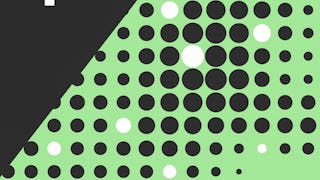Updated in May 2025.
This course now features Coursera Coach! A smarter way to learn with interactive, real-time conversations that help you test your knowledge, challenge assumptions, and deepen your understanding as you progress through the course. In this comprehensive course, you'll learn how to create game-ready assets and environments by mastering Blender 3 and Unreal Engine 5. Starting with the basics of Blender, you’ll become familiar with its user interface, modeling tools, and the importance of seams and UV unwrapping. Progressing through the lessons, you’ll explore edge loops, modifiers, and how to manage and organize assets using Blender’s asset manager. By the end of the Blender section, you’ll have created your first modular 3D assets, including dungeon walls, doors, and more detailed decorative elements. As you transition into Unreal Engine 5, you’ll learn how to import these assets, apply textures, and set up modular pieces to create rich, immersive environments. The course covers lighting techniques using HDRI setups, advanced UV mapping, and even introduces you to Unreal Engine’s powerful material and rendering tools. Throughout the journey, you’ll build a full modular dungeon environment, learning how to stack modifiers, integrate smaller assets, and finish complex geometry using both Blender and Unreal Engine 5. This course is ideal for aspiring game designers or 3D artists who want to build professional environments. By the end, you’ll have a solid understanding of asset creation, optimization, and integration across both Blender and Unreal Engine 5, allowing you to create detailed game environments from scratch. This course is designed for aspiring game developers, 3D artists, and environment designers. Basic familiarity with Blender and Unreal Engine is recommended but not required.
















